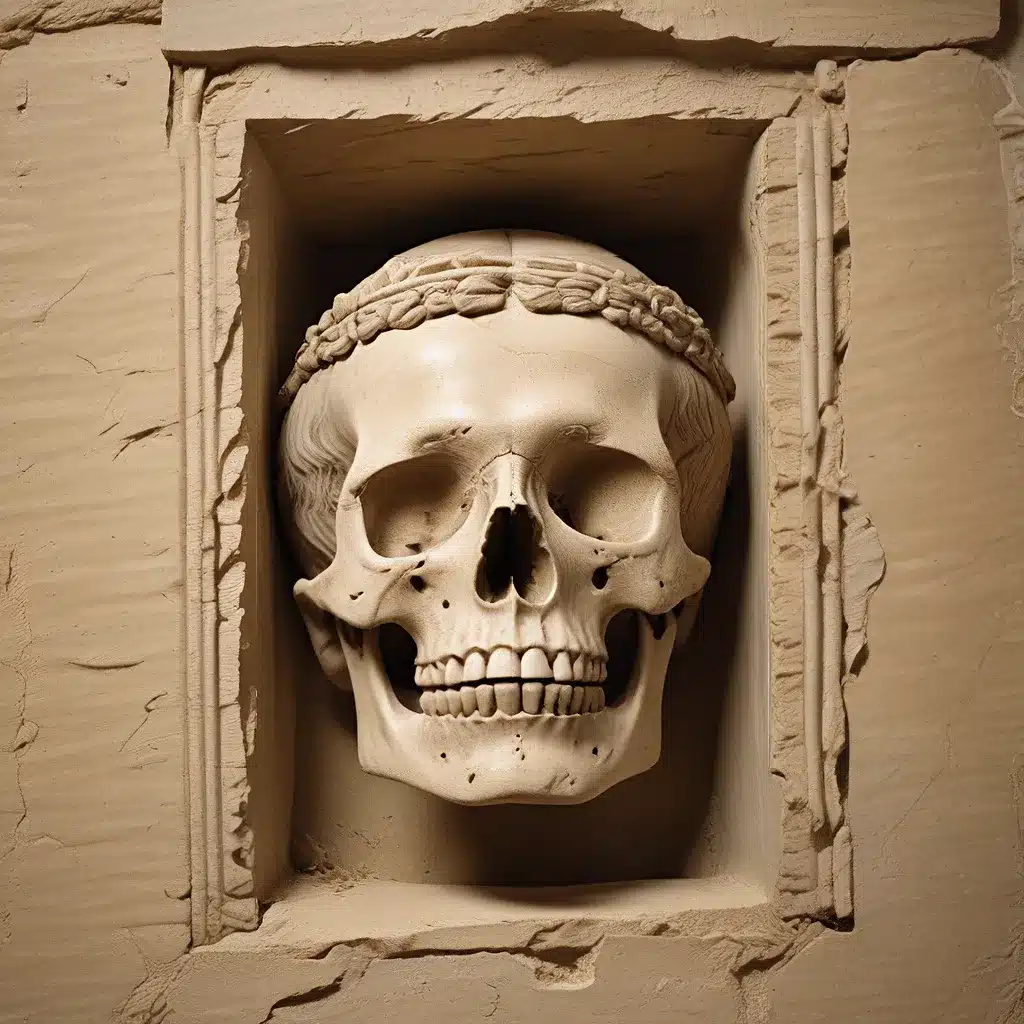
Exploring the Rituals and Beliefs Surrounding Death in Ancient Civilizations
Death has long been a subject of fascination and mystery for humanity, with ancient civilizations developing complex rituals and beliefs to navigate the transition from the mortal realm to the afterlife. Nowhere is this more evident than in the ancient cultures of Egypt, Mesopotamia, and the Andes, whose funerary practices offer a window into their profound understanding of the cosmos and the human experience.
In the land of the pharaohs, the ancient Egyptians believed that death was not the end, but rather a passage to a higher plane of existence. This belief was manifested in their elaborate funerary practices, which were designed to ensure the safe passage of the deceased to the afterlife. The mummification process, for instance, was seen as a means of preserving the physical body, allowing the ka (the spirit or life force) to return to it. Alongside the mummy, the Egyptians would place a variety of grave goods, ranging from jewelry and clothing to tools and food, to provide the deceased with the necessary provisions for their journey to the afterlife.
Similarly, the Mesopotamian civilizations of Sumer, Akkad, and Babylon developed intricate funerary rituals that reflected their belief in the continued existence of the soul after death. The Royal Tombs of Ur, for example, have yielded an extraordinary array of grave goods, including precious metals, fine jewelry, and even the remains of sacrificed servants and animals, all intended to accompany the deceased ruler into the next life.
In the Andes, the Inca Empire and its predecessors, such as the Moche and Nazca cultures, also placed great emphasis on honoring the dead through elaborate burial practices. The Inca in particular were known for their mummification techniques, which involved the preservation of the bodies of important individuals, known as Qhapaq Inca, who were then entombed in specialized burial structures called chullpas.
These ancient funerary practices not only shed light on the spiritual beliefs of these civilizations but also offer valuable insights into their social structures, political hierarchies, and artistic traditions. By examining the grave goods and burial sites, archaeologists and historians can reconstruct the lives of the deceased and gain a deeper understanding of the cultural and religious values** that shaped these ancient societies.
Decoding the Symbolism and Significance of Funerary Artifacts
Beyond the physical manifestations of ancient funerary practices, the symbolic meaning behind the artifacts and rituals is equally fascinating. In ancient Egypt, for example, the hieroglyphic inscriptions and mythological imagery adorning the walls of tombs and sarcophagi provide a wealth of information about the beliefs and cosmology of the Egyptian people.
The iconic golden mask of King Tutankhamun, for instance, is not merely a masterpiece of ancient Egyptian craftsmanship, but also a symbolic representation of the pharaoh’s divine status and his journey to the afterlife. The falcon-headed design of the mask, which evokes the god Horus, underscores the pharaoh’s connection to the divine realm and his transformation into a god-like being in the afterlife.
Similarly, the Nazca culture of Peru is renowned for its intricate geoglyphs, or large-scale drawings etched into the desert landscape. These enigmatic figures, which include animals, geometric shapes, and anthropomorphic beings, are believed to have held ritual and spiritual significance for the Nazca people, potentially serving as markers or offerings for the deceased during their journey to the afterlife.
Emerging Theories and Controversies in Ancient Funerary Practices
As our understanding of ancient funerary practices continues to evolve, new theories and controversies have emerged that challenge long-held assumptions and push the boundaries of our knowledge.
One such area of ongoing debate is the purpose and function of the Pyramids of Giza. While the traditional view has been that these monumental structures served as royal tombs for the Egyptian pharaohs, some scholars have proposed alternative theories, such as the idea that the pyramids were built as astronomical observatories or power plants** for the ancient Egyptians.
Similarly, the mysterious and often violent burial practices of the Moche culture in Peru have been the subject of much scholarly discussion. The discovery of mass graves containing the remains of individuals who appear to have been sacrificed has led to theories about the role of ritual violence in Moche funerary rites and the sociopolitical structure of the civilization.
The Enduring Legacy of Ancient Funerary Practices
The fascination with ancient funerary practices extends far beyond the academic realm, captivating the public imagination and inspiring a wide range of cultural and artistic expressions.
The discovery of King Tutankhamun’s tomb in 1922 by British archaeologist Howard Carter is a prime example of this enduring legacy. The unearthing of the young pharaoh’s virtually intact tomb and its treasure trove of artifacts sparked a wave of Egyptomania that continues to this day, with the iconic golden mask becoming one of the most recognizable and iconic symbols of ancient Egyptian culture.
Similarly, the mysterious and awe-inspiring nature of the Nazca lines has captured the public’s attention, with numerous theories and speculations about their purpose and origin fueling the ongoing fascination with this ancient Andean civilization.
As we continue to unravel the mysteries of ancient funerary practices, we gain a deeper understanding of the human experience across time and cultures. These rituals and beliefs not only shed light on the spiritual and cosmological worldviews of our ancestors but also inspire us to reflect on our own mortality and the enduring human quest for meaning and transcendence beyond the physical realm.
By exploring the rich tapestry of ancient funerary practices, we not only honor the legacies of these remarkable civilizations but also uncover the universal themes that unite us as human beings, across the vast expanse of history and time.


